A Buyers Guide for Turn-key / White-Label Discount Programs for Member Organizations
Want to know how to identify a discount program that can effectively attract and engage your members? This comprehensive buyer's guide gives you the tools you need to identify and assess the best discount network for your program.
Who Should Use This Guide:
This guide was written for member engagement professionals and other executives tasked with attracting more members or customers, and boosting acquisition and retention.
What You Should Learn:
The guide will outline the process for identifying a member discount platform with the greatest engagement potential, helping you effectively evaluate competing platforms. After reading this buyer’s guide, you should have a more thorough understanding of how programs are built, why platforms differ, and which features are most important. This should help you gain confidence when selecting a discount program that is best suited to attract and engage your member audience.
Table of Contents
- The Business Case for a Member Discount Platform
- Understanding the Secrets of Consumer Discounts - The Coupon Quality Spectrum
- Comparing the Discount Program Business Models
- 20 Key Elements to an Effective Member Discount Program
- Why Restaurant Discounts Matter
- Comparing the Size of Discount Networks
- Discount Network Evaluation Checklist
- Glossary of Industry Terms
- Additional Resources
A Business Case for a Member Discount Platform
Of all American retail businesses, 91% offer their customers an engagement/loyalty program, and 98.4% of these loyalty programs use some form of discounting strategy to attract, engage, and retain their customers. Whether it’s reduced airfare, rewards, or points that can be redeemed for products, discounts are a tremendous motivator because they leverage all consumers’ collective desire to save money. The best part? Discounts are popular with all demographic groups, regardless of age, income, or gender.
That’s why a growing number of organizations are offering their members or constituents compelling local discounts at restaurants, retailers, theme parks, and travel related providers. Compelling discounts are the closest thing to a universally appealing benefit, as roughly 96% of consumers use coupons or discount offers.
The more relevant and memorable discounts your organization can offer, the more members you can attract and engage, right? Some organizations have even tried building their own discount program and generated some interest and engagement. But their challenge becomes transitioning from a homegrown discount program to
one that can meet the needs of a large, nationwide constituency, where members live in urban, suburban, and rural areas.
Turn-Key Discount Platforms
That’s where a turn-key / white-label nationwide discount program can help. It can deliver hundreds of thousands of discounts to your members, and as long as it delivers compelling, relevant, and meaningful discounts, you’ll have a new tool to help you:
-
-
- Add real value to your benefits package
- Help members offset the cost of being a member
- Attract the attention of potential members
- Engage members who otherwise have not yet fully engaged
- Generate goodwill and help boost member retention
-
Understanding the Secrets of Consumer Discounts - The Coupon Quality Spectrum
Before you compare discount programs, it's helpful to know some hidden realities of the world of consumer discounts.
Personal Relevance is Key
For any discount program to be truly engaging it must be personally relevant to each of your members. If it lacks personal relevance it is unlikely to have the meaningful impact on engagement you’re hoping for. (See this long list of peer reviewed sources about the persuasive power of personal relevance.)
When it comes to a truly engaging member benefit, a discount network must deliver on all four of these fundamental characteristics of personal relevance:
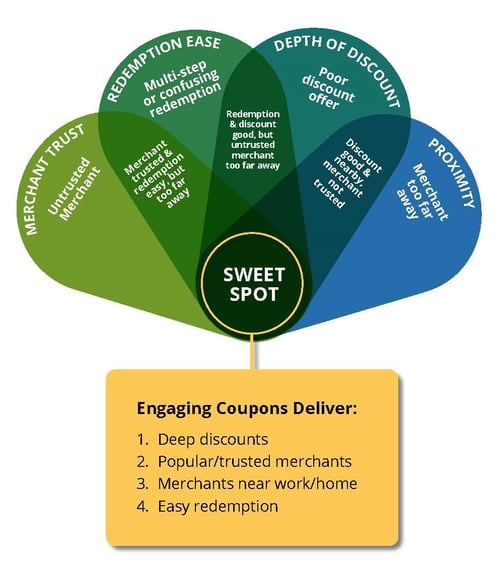
- The network must deliver discounts with compelling value .
- The discounts must be within close proximity to where members live and work (physically or digitally).
- The discounts must be easy and convenient to browse and redeem.
- The discounts must be from merchants they know and trust.
A successful discount platform must deliver on each of these criteria, or it will languish and be ignored by the people you want to engage.
We're all hungry to find deep and compelling discounts, but we’ve also encountered so-called discounts that are uninspiring, and not worth the effort.
And yet, because discounts are so popular, many retailers have found an audience for less relevant or ho-hum discounts as a means of up-selling higher priced products, or clearing out unsold and less popular items. That’s where private discount networks can help merchants by delivering a closed ecosystem of ideal consumers.
For example, consumers with a college degree or a professional career have a greater level of disposable income. Accordingly, the best discounts are often reserved for private discount networks that deliver these key consumer audiences.
Retailers are stingy with their deepest discounts. They reserve their best discounts for the purpose of attracting an ideal consumer that will spend more money and with greater frequency. Retailers will go to great lengths to avoid exposing their best and deepest discounts to the general public and existing customers who are willing to pay full price.
That’s why it’s important to know how to differentiate between coupons that engage, and those that don’t. When it comes to discount programs, here are the three basic types of retail discounts found in most turn-key discount programs:
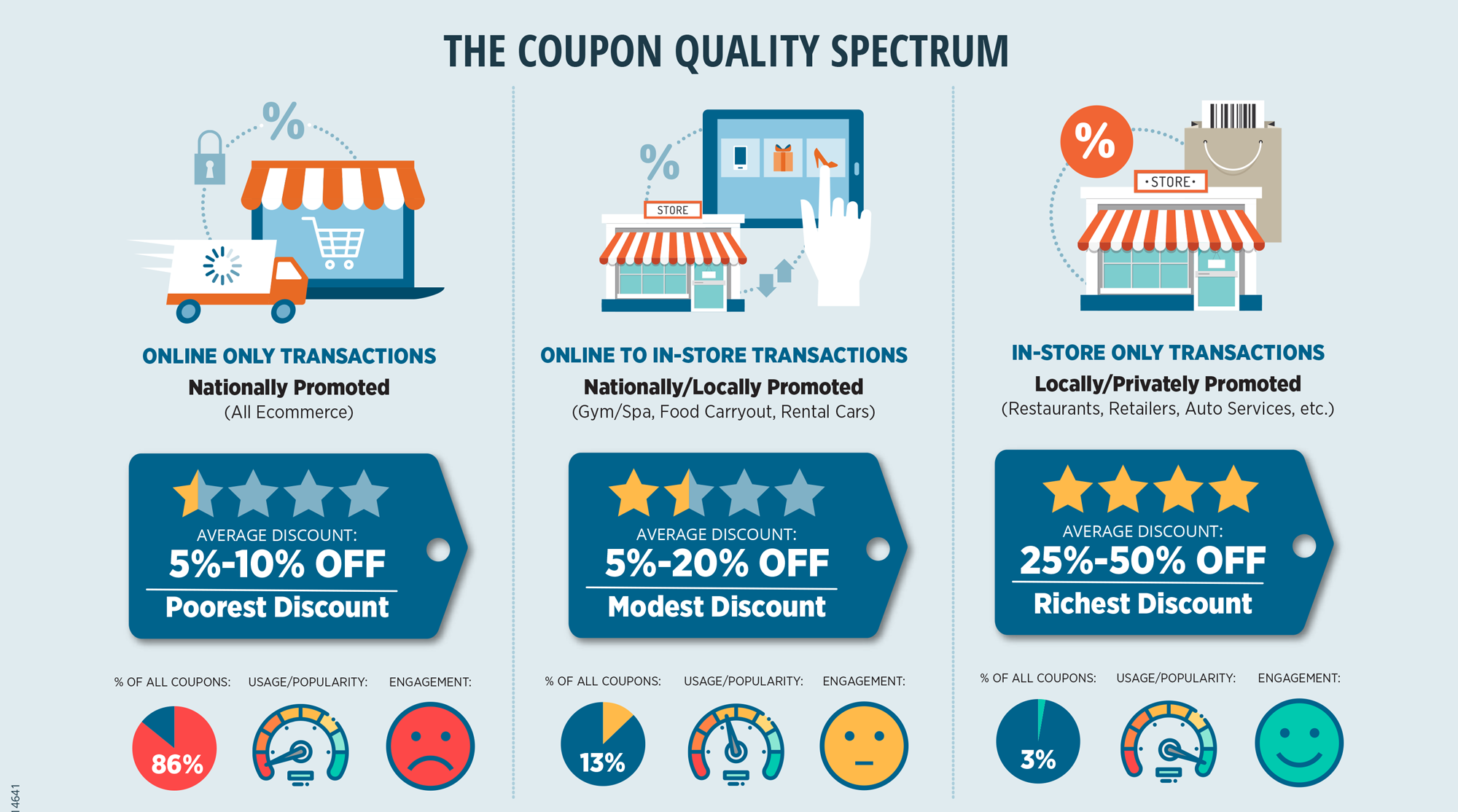
1. Online/Affiliate Offers - ONLINE ONLY TRANSACTIONS
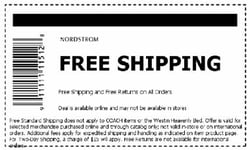
(Example: 5% off online, 1-800-Contacts)
These offers are online only, and usually don’t exceed 5-10% in value. Merchants provide a unique URL to the “publisher,” so each transaction can generate revenue. That means a portion of every sale gets split between your discount provider and other parties.
A few discount networks will pass along the entire available discount to the members, but most programs will take a portion of the available savings, and give your members a modest discount with diminished value. Most discounts aren’t unique, and often don’t include a true deal at all.
2. Third Party Aggregated Offers - ONLINE TO IN-STORE TRANSACTIONS

Example: A gym or fitness center offers 10% off monthly fees on a membership)
These offers are sourced via third-party aggregators who compile discounts and package them together for distribution to online retailers and others willing to publish their discount offer. Some merchants, like gyms and spas, will only offer a discount through an aggregator, so these deals are typically not private or exclusive. Aggregators like ValPak® for example, will allow a discount program to use their inventory of local discounts, but these are the same public offers that are sent en masse to mailboxes that most view as junk mail. The discounts are often forgettable, typically in the modest range of 5%-20% off, and usually come with extensive restrictions about when and how they can be used.
3. Privately Negotiated Brick Mortar Offers - IN-STORE ONLY TRANSACTIONS
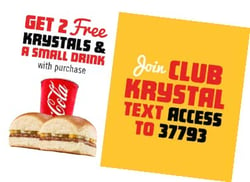
Example: A buy-one, get-one-free offer from a local restaurant
In-store, privately negotiated offers between the discount network and the merchant are the “gold standard” in the discount ecosphere.
That’s because roughly 90% of consumer spending occurs in a brick & mortar location, so brick-and-mortar discounts usually have the highest relevance, usage and value. Since these offers are negotiated on a location-by-location basis, they can be costly to acquire for the discount program, and are the rarest to find.
20 Key Elements of an Effective Member Discount Program

The rule of reciprocity suggests that members are far more likely to engage with an organization if they are first offered something of significant value. Once you have attracted them to engage with your discount program, you’ll be far better positioned to keep them engaged with your organization over time.
That’s why thousands of relationship-based organizations have leveraged a discount program to boost members acquisition and retention.
But not all discount programs actually work. Some may appear to have what it takes to be a compelling member benefit, but they lack in some important way. That’s why it’s important to know how to differentiate between discount programs that engage and those that don’t.
As discount programs vary widely, when your organization is vetting member discount programs, evaluate how each program delivers on each of these key elements:
1. Is it a Closed (Password Protected) Discount Network?
Merchants reserve their best discounts for closed networks where they can control the exposure of their discounts behind a password-protected wall. Discounts offered to the general public are usually not compelling and aren’t typically a retailer’s best discount. Closed discount networks allow merchants to expose their best discounts to a targeted audience. Without that level of security, your discount network will likely scare away many popular merchants.
2. Does a significant percentage of their revenue come from online transactions, insurance sales, and other sources?
Some white-label discount platforms don’t want you to know that their “free” or “nearly free” discount program has some hidden costs. Their business model shifts the cost burden of your so-called benefits program to the backs of your members. Frequently, it's because they have obtained their discounts from sophisticated affiliate marketing programs via an online affiliate network.
Consequently, these “free” programs don’t provide many (if any) of the most popular in-store discount offers because they can’t make money off them like they can an online transaction. Programs that offer mostly online discounts are frequently ignored by members because they typically lack value.
3. Is your organization’s branding front and center?
A major benefit of member discount programs are the regular, positive interactions your audience associates with your organization. As such, a discount program should provide the ability to private label the program on your organization's behalf. So when members save, it's your brand that benefits from the boost in awareness and goodwill.
Alternatively, some program providers just promote themselves throughout their web properties and apps. Don’t settle for that.
4. Do the majority of their discounts consist of in-store offers at a brick & mortar storefront?
Although online spending is growing, still 90% of all retail purchases are made in-store. If the discount program consists mostly of online discounts, then your discount program won’t have enough relevance to keep your member’s attention. In-store offers are where consumers spend, yet most discount programs don’t have local, in-store offers because they are expensive to acquire and maintain. Always ask your discount program what percentage of their discounts are from a local brick-and-mortar store where the offers are redeemed at a cash register.
5. Are the discounts in close proximity to where your members live and work?
This research shows how the average consumer travels just 15-20 minutes for most of their everyday purchases. The more frequent the purchase, the less willing they are to travel. Consumers will typically travel less than 8 minutes for gas or groceries, but may travel 15-20 minutes for other, less frequent purchases like a nice restaurant, a movie, auto services or apparel. If the discounts aren’t near where your members live and work, they are unlikely to engage. And to do that, it takes a truly nationwide network with discounts in urban, suburban and rural communities.
6. Are the discounts easy and convenient to redeem?
Consumers demand ease and convenience from the merchants they patronize. That’s why each offer must be easy to redeem, such as showing a coupon or a mobile phone at the point of sale. Serialized bar codes are also a great way to make redeeming easy, as a cashier simply scans the code and redemption is automatic. Beware of coupons that require multiple steps to redeem an offer, like buy a gift card, then make your purchase and apply the discounts. Also avoid coupons where the user must wade through a flood of terms and conditions. In these cases redemption will be frustrating and lose their practical value.
7. What percentage of merchant offers are negotiated directly with merchants, and what percentage are obtained from a third party source?
If the discount network has direct relationships with merchants, they typically get the deepest discounts. If the discount platform uses a third party, those discounts are typically weak, modest discounts. Such discounts are not compelling enough to attract and keep your members engaged.
8. Are the discounts unique or exclusive, or are they available to the general public?
The scarcity principle hearkens back to the economic fundamentals of supply and demand: the more exceptional or exclusive an opportunity, the more valuable it is perceived. When discounts are offered to the general public, they have little or no lasting appeal. Additionally, because so many consumers comparison shop on Amazon, free discount programs are finding difficult to compete with Amazon whose prices can usually beats public facing offers. So, look for discount programs that deliver unique or “members only” discounts. Ask any potential provider if their discounts are open to the general public or not.
9. Do they offer the types of merchants where consumers make everyday purchases?
Compelling discount programs must deliver discounts at places where your members like to shop, and on the things they already purchase. That includes fast food, pizza, casual dining, popular apparel and accessories, electronics, movie tickets, auto care, cell phone plans, etc. Discounts on everyday items like these should comprise the majority of discounts on your program.
It’s okay to have a few merchants like day-spas and Jiu Jitsu classes, but because the usage of these offers is so infrequent, they should consist of less than 1% of your network. These deals won’t inspire your members to use your discount program regularly.
10. How deep are the discounts?
It goes without saying that people want deep discounts and freebies. And while not every merchant is willing or able to offer a 50% off or BOGO offer, the best discount programs will offer very few ho-hum 5%-15% off deals. The deeper the discount, the more excited members will be to use the discount program on a regular basis. Look for programs where the average discount across all discount categories exceeds 25%-40% or more. Anything less than that is unlikely to inspire member engagement.
11. Do they manage your member data securely and confidentially?
All discount programs require the sharing of some member data just to verify and validate membership in your discount program. Most will need a name and an email address at a minimum. Some programs may have secure credit card capability to allow for online purchases of things like movie or theme park tickets. Protecting this vital information is of the utmost importance to your organization.
Be wary of discount programs that give away their discounts in order to get at your data for marketing purposes. Look for discount programs with a history of success in managing complex security demands, like those that have large corporate clients with sophisticated data security procedures and protocols. If a billion dollar company is willing to trust their data with your discount network, you’ll know you’re in good company.
12. Do they offer instantly redeemed mobile coupons?
91% of college graduates own a smartphone. The fastest growing segment of coupon usage is from a mobile device redeemed in-store. The key here is redeemable in-store. At a cash register. On the spot. In contrast, some “mobile coupons” are really just an upsell to purchase a companion coupon booklet, or print the coupon at home. Make sure mobile coupons can be redeemed simply by showing the mobile device at the point of sale.
13. Do they offer travel and other big ticket items?
Everyday relevance is important, but look for a discount network with deep discounts on large purchases too. Discounts at major theme parks are increasingly hard to find, but some discount networks are large and powerful enough to negotiate discounts at places like DisneyWorld® and Disneyland® Resort, etc.
Discounts on hotels and car rentals are also popular with members, but only if those discounts are better than the online travel booking engines. In addition to travel, look for discounts on new cars, auto repair, home and garden items, etc. All are all essential to a robust discount program, and a great way to instantly prove the quality of your discount program to your members. (For travel-only discount solutions, see "White Label Travel Platforms: the Ultimate Buyers Guide.")
14. Do they offer a merchant compliance program?
If one of your members has a coupon rejected while at the front of a busy line or in the company of friends, it’s embarrassing enough to keep them from ever using the discount program again. It’s critical that merchants accept every coupon from your discount program. But sometimes businesses change ownership, or the teenager at the counter hasn’t been sufficiently trained about which coupons are legitimate or not. Ensuring compliance requires a good relationship between the discount program and the merchant. Without a direct relationship, members risk having a bad experience when they go to redeem a coupon.
One way a discount program enforces compliance is by using serialized (one-time use) barcodes. These codes are scanned or manually entered into the cash register so the discount is instantly and reliably applied.
15. Do they offer marketing and promotional services?
How will your members learn about new and relevant offers? Your staff should NOT have to create and execute a member marketing strategy all on its own. Quality member discount programs promote the network to members on your behalf through email, social media, printed materials, and more. Ongoing education is vital, as it can take time to get members in the habit of saving.
Push for high standards in this area, as there is a direct correlation between promotion and usage. The better the provider is at communicating relevant messages, the more your members will use the program.
16. Do they offer high-touch, tailored customer support?
Consumers sometimes need a little hand-holding with even the best discount programs. Maybe they need help downloading the mobile app, or an older alum wants some help finding a specific restaurant for the discount network? Who should they contact? Most HR departments are already short staffed, and don’t have the resources to take those calls. Quality member discount programs will provide support for your member as part of their program offering. Look for seamless methods to handle issues, including call centers, email, and real-time chat.
17. Do they want to be a partner or just a vendor?
A successful discount program takes more than just throwing money at it. Find a provider who’s willing to act as a partner. One who is just as invested in the success of the program as you are. Work with that partner to create a great launch effort, set goals, monitor and adjust key performance indicators, and change the program as necessary. Whether you’re having monthly or quarterly calls, you should be able to trust that your partner is working behind the scenes to make your white-label discount program perform as well as possible.
18. Do their offers require a purchase of a certificate, or other multiple step redemption process?
Ease of redemption is a key factor to a successful discount program. When a discount is confusing to redeem, it’s a forgettable experience that few member will want to use. Some dining deal programs, for example, require the purchase of a coupon/certificate, but redemption is both difficult, takes time, and is usually disappointing. Look for a discount program that has instantly redeemed coupons.
19. Do you they charge merchants to join your discount network?
Aside from making money from online transactions, other discount networks will charge merchants to join their network, using your organization’s name as leverage. While it’s important for discount networks to build their discount network for your members, the big difference is in how it’s done. Free programs will accept any merchant, often focusing on small, independent merchants such as massage therapists, lawyers or multi-level marketers who have a very narrow audience and limited popularity.
20. Do they have only one-off, daily deals, or do they have evergreen offers?
As opposed to daily deals, evergreen offers have no looming expiration date. Evergreen offers are a win for consumers, as the deals are available when the member has the greatest need, not merely when the merchant is trying to clear out unwanted inventory.
Choose Wisely
The key to selecting an effective discount program is to consider the factors other than whether or not it's free. Free discount programs may tout themselves as having great appeal, but if you dig a little deeper, you'll know their true costs in terms of engagement, trust and loyalty.
Whether you manage members, employees, constituents, or customers, make sure the discount program you select possesses each of the key elements previously mentioned. By doing so, your program will have the engaging power you expect, and drive ongoing loyalty for years rather than just weeks.
Why Some Merchants Don’t Offer Discounts
While it seems like all merchants offer a discount of some kind, the reality is that certain merchants simply aren’t interested in participating in the discount space, and won’t appear in any discount program. Here are four primary reasons why:
1. Low Margins:



Retailers, like gas stations or Walmart®, are aggressive competitors in the low-price retail space. They are profitable by selling their products in high volume but at very low profit margins. Consequently, they typically can't be profitable if they offer additional discounts to a discount program.
2. Exclusivity:



Merchants, like supermarkets, will only offer discounts on their own private-label brands through their store-owned loyalty program. They too work on very low profit margins, but will honor the ubiquitous coupons from manufacturers of consumer packaged goods (CPG), but only because the store is reimbursed for all related costs.
3. Branding:



High-end or niche merchants, like Rolex® Chanel®or Whole Foods® have a philosophy that discounting is contrary to their reputation as a premium or luxury brand.
4. Demand:


Popular retailers, like Apple®, can generate enough consumer demand for products, like the iPhone® or Apple Watch®, without ever having to offer a discount.
Discount Programs: Comparing Business Models

Knowing how a discount program makes money will reveal much about the company’s ability to attract and engage your members. Although each program will differ to varying degrees, most all discount networks operate on one of these two basic business models:

“Member” Funded Model (MFM)
A Member Funded Model is usually a free discount program. These networks charge little or nothing upfront. Instead members subsidize the administrative costs via online purchases, up-sells for insurance, or by other means. The vast majority of discounts are redeemed online because the MFM must be able to monetize each transaction. Consequently, members typically experience smaller discounts because a portion of each transaction is being divvied up among various entities.

Organization Funded Model (OFM)
The Organization (or group) Funded Model (OFM) is a network that doesn’t depend upon digital transactions to monetize its program, but charges the organization a subscription or fee for members to access the discounts. This allows members to experience larger discounts and a greater selection of merchants because both brick and mortar stores and e-commerce merchants can participate in the discount program.
Knowing how a discount program makes money will reveal much about how well they are aligned with your business goals.
“Member” Funded Model (MFM)
Discount networks using a member funded model (MFM) are best suited to organizations that aren't focused on member engagement, or of offering benefits that can drive member acquisition and retention. These free discount programs will give away access to their discount program, but will generate their operational revenues in ways that may not be readily apparent. They may end up hurting member engagement and your reputation.
Here are five ways an a Free Discount Program (MFM) will generate revenue from your members:
1. Monetizing users’ online transactions:
Discount programs using an MFM will consist mostly of Publicly Available Affiliate Offers where transactions occur online. This will likely be a significant source of revenue. Most MFMs don’t negotiate directly with merchants, but obtain their discounts from sophisticated affiliate marketing programs that are incentivized to promote discounts via an online affiliate network. Consequently, MFMs don’t provide many Private, Brick & Mortar Offers because these types of coupons (i.e. redeemed at the point of sale) can’t be monetized like they can an online transaction.
2. Upselling members on (e.g.) insurance or other products:
Many discount networks use their network as a lead generation engine, aiming to contact your members and solicit them for insurance products. These so-called membership discount programs then generate revenue from premiums, interest or investment income earned from those premiums.
Some discount networks are subsidiaries of licensed wholesale and reinsurance brokerage firms that offer risk management, underwriting management and benefits consulting products. Depending on the laws in each state, they may or may not be required to divulge the amount of commission revenue they generate from your members.
3. Soliciting merchants to join their discount network for a fee:
It’s critical that your discount network continually add new merchants. However, when a discount network relies on generating revenue from merchants who join its program, it is likely to solicit and accept almost any merchant willing to pay a fee to gain access to its members. Similarly, popular merchants like restaurants will not participate, since they have little incentive to pay a fee to join a discount network that delivers few if any financial benefits. Consequently, many MFMs rely heavily on less popular merchants like spas, massage therapists, or tax preparation services, all of which have a very narrow audience, limited popularity, and low usage.

4. Selling, renting or loaning member contact information or usage data:
Some MFMs will generate revenue from selling, renting or loaning your membership's user data to the highest bidder. Some call it “Bulk Enrollment,” where your members’ personally identifiable information is loaded onto a partner’s database, often without your members’ consent. Others will collect aggregated user data and sell that information to data warehouses.
5. Using points/gamification:
Some membership discount programs will heavily promote a points or “rewards” program, offering prizes or extra value to incentivize frequent purchases. To pay for it, they entice users to make purchases on clearance or unpopular items that, after fees and taxes, will often cost more than retail. Additionally, the rewards threshold is set as high as $1,000 in total purchases before users can redeem any points.
While the Member Funded Model can be enticing because of the low barrier to entry, its business model prevents organizations from offering significant value. In the MFM model, engaging members take a back seat to recoup provider costs. The average discount per transaction is in the range of 4%-12% per transaction. Consequently, most MFM programs experience low usage and are forgotten by members because of the lack of compelling value to keep them coming back.
The Organization Funded Model (OFM)

An organization-funded discount network is funded by an annual or per-member licensing fee. Discount programs using an OFM are incentivized to engage as many of your members for as long as possible, in order to retain your organization as a paying client.
OFMs are typically best suited for organizations that want to attract and engage their members or use the discount program as a means of driving member acquisition or retention.
For OFMs, the value must be compelling and relevant. Otherwise, members fail to engage and the ROI is unsustainable. A true OFM doesn’t need to depend on user transactions as a source of revenue. To succeed, it must focus on delivering compelling value to the organization's members in the form of privately negotiated brick-and-mortar offers. Consequently, OFMs typically have an average discount in the range of 25%-40% off per transaction. Because OFMs generally don’t charge merchants to join their network, they must be more selective about who they will allow to join their network – favoring popular local merchants instead of low-usage, online-only merchants.
Why OMFs Deliver Better Value to Organizations
In contrast to the OFMs, the Member Funded Model discount programs have few, if any, direct relationships with merchants. OFMs however rely heavily on their direct relationships with merchants. This allows them to deliver greater value to your members because: OFMs cultivate and nurture ongoing direct relationships with merchants. This allows them to deliver greater value to your members because:
- They can negotiate directly for better discount offers;
- They can execute custom redemption codes and serialized coupon offers to make redeeming easier and more reliable;
- They can work directly with merchants to provide higher levels of customer service, resolving questions and issues quickly and efficiently;
- They can pass along to members the entire discount the merchant is willing to offer, rather than keeping a portion to help pay for expenses.
OFMs are incentivized to grow the number of members who sign up and actually use the discount program. The more members they can attract and engage, the more the OFM will benefit. As the program grows and more constituents use the discount program, the cost per member should actually decrease.
With most organizations, the costs of acquiring new members can be significant, but if the discount program is structured correctly, it can be a cost-effective tool to attract new members into your program. Likewise, you can’t expect to attract members by offering little or no value. Compelling value is critical to getting members to initially engage.
The “Hybrid” Model

Keep an eye out for programs that charge a monthly subscription fee, yet also rely heavily on monetizing their business from online transactions.
You can recognize a "Hybrid" model program by knowing the percentage of their merchant network that has Privately Negotiated Brick & Mortar Offers versus the percentage of Third Party Aggregated Offers and Online Merchant Offers.
Discount programs using the hybrid model, in large part, consist mostly of Third Party Aggregated Offers and Online Merchant Offers. A very small percentage are Privately Negotiated Brick & brick-and-mortar offers. Ask your sales representative for the percentage of contractual relationships they have negotiated directly with merchants, and how many are obtained from third parties. This will help you identify whether or not their network consists of the prime Privately Negotiated Brick & Mortar Offers. They may not be willing to share this information, which should serve as a red flag.
Why Restaurant Discounts Matter
Because most people are accustomed to dining out, restaurant discounts are a critical factor in getting members to participate in your discount program.
On average, Americans eat out 4.2 times a week, or a little over 18 times per month. According to the Bureau of Labor Statistics, the average American spends $232 per month, or $2,784 per year to eat commercially prepared food outside the home. High-income individuals (in the top 20% income bracket) will spend a whopping $6,510 per year on commercially prepared food. Although most national chain restaurants have wonderful name recognition and consumer appeal, they are typically quite restrictive about giving real, honest-to-goodness discount offers that are redeemed at the point-of-sale. Most use gift cards and other methods that require a multiple-step redemption process, making it more difficult for members to truly save money. While casual and fine dining restaurants are popular and searched for most frequently, quick-serve (fast food) restaurants are typically the most frequently redeemed. Make sure your member benefits offer a good mix of casual, fine and quick serve restaurants for your members to choose from.

This can be expensive for the discount network, but pays off significantly for your organization, as members will frequently return to your mobile app or online discount network to look for a local restaurant discount.
Size Matters: How To Compare Discount Networks

When doing your due diligence, be prepared to encounter some rather creative methods with how discount networks compare themselves to competitors. It’s helpful to know how they spin those numbers to their advantage, making it harder for you to arrive at an apples-to-apples comparison.
According to the U.S. Census Bureau’s Quarterly Retail Report, 88% of all disposable income is spent at brick and mortar stores, while just 12% is spent online. If your discount program has only online merchants, then it will only be relevant for about 12% of your constituent’s overall purchases. In-store offers are critical to the success of your discount or membership benefits program.
That’s why the number of physical merchant locations within proximity of your members/constituents can mean all the difference when it comes to member engagement. The more physical locations where your members can save, the more opportunities they’ll have to engage with your program. But because most discount programs are monetized by online transactions, they have little motivation to include merchants with physical locations. In these cases you’ll notice they simply avoid any mention of their total number of in-store merchant locations.
Instead they use creative methods to arrive at an estimated number of discount “offers” or “discounts.” But this tactic is prone to manipulation and can obfuscate the true breadth and depth of their savings network. If a discount network lacks a significant number of physical locations for your members to save, be on the lookout for these creative methods to deceptively report the size of their discount network:
1. Creative Math:
Some programs add the number of locations and discount offers together, calling them “opportunities to save” or “ways to save.” A savings location should be just that: a single physical location with one or more discounts on its product or service.
2. Multiple Counting of Same Location:
Some programs count the same offer multiple times simply by manipulating the expiration date. For example, they will list the same product/service for an entire year, but expire an offer each month. In this way the program will count 12 offers for the same product and/or service. This practice underscores the reason to compare physical locations rather than the number of “discounts” or “offers.”
3. Counting Redemption Type:
Another technique used to artificially inflate the size of the merchant network is to count each type of redemption method as a unique offer. For example a mobile coupon, an in-store coupon and an online discount are counted as three distinct offers, when in fact the discount and product are the same.
4. Counting Cities Instead of Locations:
One technique used to inflate the size of networks is to count the number of cities where savings can be had. But rather than counting cities or towns with physical locations, some providers count all municipalities because any user with access to a computer can use an online discount. Look for savings networks that count in-store locations with a discount offer. The most recent U.S. Census of Governments reports 19,522 municipalities in the United States. So be on the lookout for those networks who use municipalities as their only measurement for the size of their network.
5. Location Inflation:
Some providers inflate their numbers by using grocery/convenience stores and pharmacies in their location counts. To justify this, they may offer public-facing grocery coupons or pharmacy discounts that offer very little value, and are available virtually anywhere. With 40,000 grocery stores, 155,000 convenience stores, and over 67,000 pharmacies, ask your program if they include these types of stores in their location counts.
6. Clients Instead of Locations:
When the number of physical locations is not convenient to report, some discount networks will cite their number of clients. This says nothing about how many ways your member can save.
Discount Network Evaluation Checklist
This worksheet can help your organization determine how potential discount networks deliver on the most important features relating to your organization's goals. (Download a PDF here)

Download the evaluation checklist for Access Development here.
Glossary of Industry Terms
Affiliate network: A web publisher or network of websites that promote discounts via its online channels.
Affiliate marketing: A type of performance-based marketing in which a business rewards an affiliate or “publisher” for delivering web visitors to its e-commerce website.
Discount platform: (or Discount Network) A collection of merchant-offered discounts that are bundled into a coupon book or digitally delivered platform and given as a benefit to a closed member group or constituency group.
In-store: A merchant location where a purchase is made for a product or service at a physical location, sometimes referred to as a brick and mortar store.
Merchant: A retailer or brand with one or more locations.
Mobile coupon: A discount offer redeemed wing a mobile device at the point-of-sale.
Offline merchant: A physical store location, not an e-commerce site.
Online merchant: An e-commerce site selling goods or services.
Print at home: A coupon or offer that is printed by the user.
Retail proximity: A merchant within a consumer’s typical travel distance.
Store Location: A physical store offering to sell goods or services.
Additional Resources
If done thoughtfully, a turn-key white label discount platform can have a significant impact on your organization’s ability to attract and engage your constituents. For additional information, you may want to consider the following resources:
Ebooks:
Case Studies:
See how other organizations have used a discount program to solve specific challenges
- Member Acquisition: Member organization boosts member acquisition
- Member Retention: Member organization drives increased member retention
- Member Engagement & Acquisition: Farm Bureau Federation boosts lagging engagement and acquisition
- Member Retention: Organization retains 80% of members by adding a discount program to member benefits
Articles
- How Amazon is Killing Free Discount Loyalty Programs
- Discounting Deeply: Why Access Merchants Offer More
- What is Member Engagement (and Why Your Membership Growth Depends On It)
- The Relationship Between Member Benefits, Discount Programs, and Successful Associations
- Gauging Member Engagement: How to Collect Actionable Data
- Research: How Far Will Consumers Travel to Make Routine Purchases?
Topics: member loyalty, membership benefits programs, membership discounts, membership benefits, Member Success, member services, member incentives
Written by: Gary Toyn
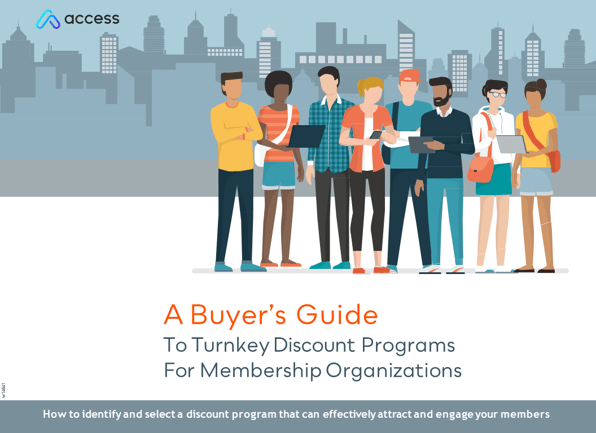


.jpeg)







Share your Comment.